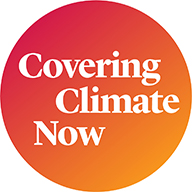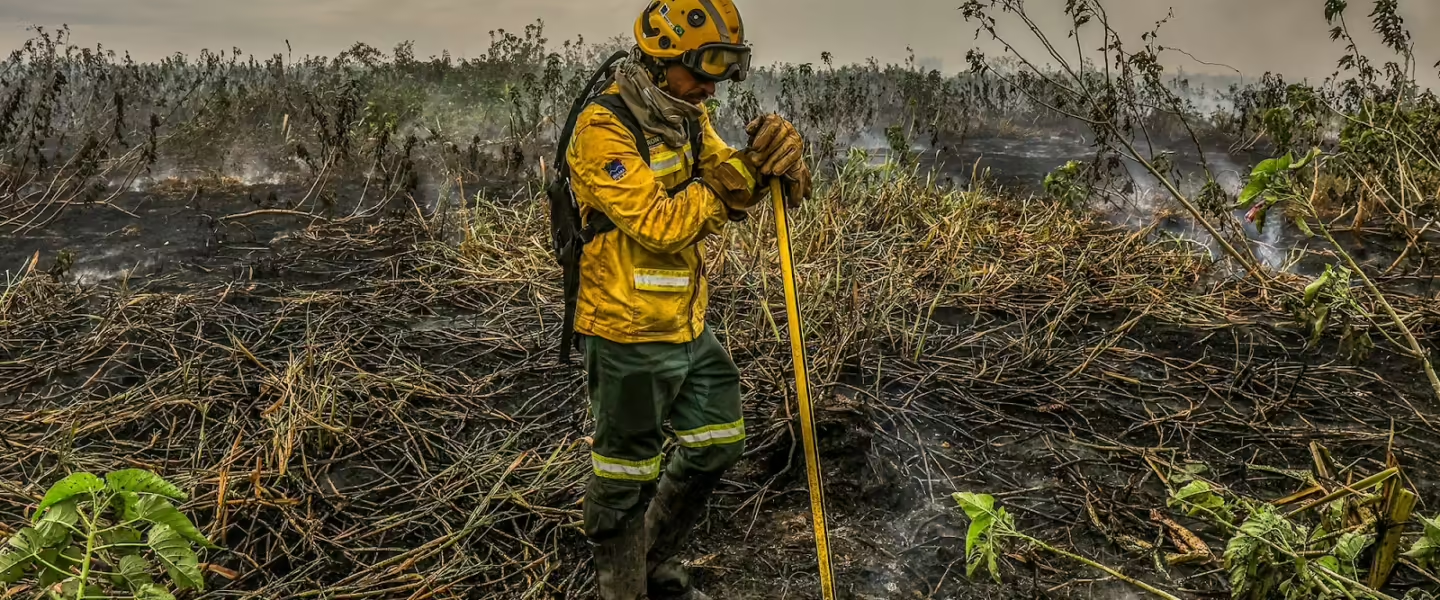A new study shows that dry, warm, and flammable conditions have skyrocketed across the continent, favoring the spread of uncontrolled fire.
|
Listen To This Story
|
In August and September, huge portions of South America were shrouded in intense smoke from wildfires raging in the Amazon and other parts of Brazil and Bolivia. The Brazilian Pantanal — the world’s largest tropical wetland — had an almost eightfold increase in wildfires this year compared to 2023. From Manaus to São Paulo and Buenos Aires, the smoke, visible from space, blurred sunlight for weeks, and posed a threat to the health of millions.
The occurrence raised alarms, but some experts warn that in the future, it might not be such an extraordinary episode. Nor was it an isolated incident over the past few years.
South America, according to a new study published in Communications Earth and Environment, is becoming drier, warmer, and more flammable. These conditions favor not only natural wildfires but also the uncontrolled spread of human-caused fire.
Even though general warming trends extend across the continent, some zones are enduring a steeper temperature rise than others. And this rise comes with more droughts and higher fire risk.
“South America is a hot spot for compound extremes but is still understudied.”
To better understand the problem, a team of researchers working in Chile, Japan, the Netherlands, and the United States delved into the ERA5 dataset (European Centre for Medium-Range Weather Forecasts Reanalysis version 5).
The team looked for days with high temperatures, dryness, and low humidity in South America between 1971 and 2022. The simultaneous occurrence of these three factors results in conditions that the researchers call “dry compounds.”
Many studies explore the conditions of dry compounds separately, explained coauthor Raúl Cordero, a meteorologist at Universidad de Santiago de Chile, but “we believe this is the first [study] to search for when these conditions happen at the same time. What we found matches with the conditions reported in these previous, separate studies.”
South America, the authors wrote, is a hot spot for compound extremes but is still understudied.
Rapid Change Across the Region
The Maracaibo basin in northern Venezuela, the northern Brazilian Amazon, and the Gran Chaco basin of Bolivia and Brazil are the regions with the largest land use changes and precipitation losses in South America. Scientists focused their research on these three immense areas, as well as central Chile, which also experienced severe wildfires in 2024.
“Unfortunately, we’re not talking about a small zone in South America,” Cordero said, “but of ample zones … affected by this immense rise in risk of catastrophic fire.”
Between 1971 and 2000, the Maracaibo, northern Amazon, and Gran Chaco basins had fewer than 20 days per year with highly warm, dry, and flammable conditions. Between 2001 and 2022, the number escalated to almost 70 days per year.
Most of the dry compounds in the three regions took place in the past two decades, pointing to brisk change. Between 2001 and 2022, yearly precipitation in the Gran Chaco dropped by about 100 millimeters in comparison to 1971–2000 levels, according to the study. In the Maracaibo region, it dropped by about 200 millimeters in the same interval. In the past decade alone, days with flammable conditions tripled in the northern Amazon and Maracaibo regions, going from 40 between 1971 and 2000 to the current 120 days per year.
The study also found that dry compounds were influenced by fluctuations of the El Niño–Southern Oscillation (ENSO). The warming of eastern tropical Pacific waters during the El Niño phase of ENSO has a substantial influence on northern Amazon weather, increasing its dryness and fire risk. The cooling of Pacific waters during the La Niña phase, on the other hand, has greater influence on the Gran Chaco region, which includes the southern portion of Brazil’s Pantanal. From 2020 to 2023, the world had three consecutive years of La Niña — and 2020, 2021, and 2023 were the driest years in the Pantanal since 1985, according to land cover mapping project MapBiomas.
One of the biggest problems with more frequent and intense fire seasons, said forest engineer Camila Silva, is that most burned areas do not have the time to recover. This is true “even in Pantanal,” she explained, “which, unlike the Amazon, partially evolved in the presence of fire.”
“We might be losing a biome we know little about.”
“The increase in frequency of extreme events and wildfires is depleting these biomes’ recovery capacity,” she added. Silva, a researcher at the Amazon Environmental Research Institute who did not take part in the study, said the research is “important because it spells with all letters what is happening and reinforces the message of previous studies.”
Despite its robust analysis and clear message, however, the study misses a few details, according to Silva. “The paper did not uncover the weight of climate change and land use change when it comes to wildfires. Up to what point can we attribute the findings to El Niño or to land use? It would be interesting to have a bit more detail of how anthropogenic factors influence what they found.”
Regardless, more action and research are urgently needed to mitigate further wildfire damage throughout South America, Silva said. “Compared to the Amazon, there’s a huge gap in what we know about the Pantanal [and other regions]. We might be losing a biome we know little about,” she said.
Cordero hopes the new research contributes to greater fire preparedness and biomass management. Such actions may help communities avoid the worst effects of wildfires, which are not limited to the environment. “We cannot forget that fires also kill people directly and indirectly,” he said.
This story by Meghie Rodrigues was originally published by Eos Magazine and is part of Covering Climate Now, a global journalism collaboration strengthening coverage of the climate story.





